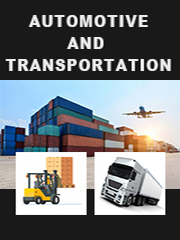TOP CATEGORY: Chemicals & Materials | Life Sciences | Banking & Finance | ICT Media

Download Report PDF Instantly
Report overview
The global Automotive Seat Comfort System market was valued at US$ 43380 million in 2022 and is projected to reach US$ 55020 million by 2029, at a CAGR of 3.5% during the forecast period. The influence of COVID-19 and the Russia-Ukraine War were considered while estimating market sizes.
Automotive seat is the seat used in the automobile. Automotive seat has the function of keep drivers and passengers comfort and safe. Depending on the season and the personal preferences, vehicle occupants have a choice of heated seat and climate controlled seat functionalities. Directions of adjustment adapt the seat to each individual body in a matter of seconds. These adjustment settings can, of course, be stored in memory and recalled at any time. Comfort functions like massage, memory recallable static contour settings of the backrest and dynamic lateral support for stabilizing the body when the vehicle is cornering are additional features. This report focus on Automotive Comfort Seat System market.
This report aims to provide a comprehensive presentation of the global market for Automotive Seat Comfort System, with both quantitative and qualitative analysis, to help readers develop business/growth strategies, assess the market competitive situation, analyze their position in the current marketplace, and make informed business decisions regarding Automotive Seat Comfort System. This report contains market size and forecasts of Automotive Seat Comfort System in global, including the following market information:
Global Automotive Seat Comfort System Market Revenue, 2018-2023, 2024-2032, ($ millions)
Global Automotive Seat Comfort System Market Sales, 2018-2023, 2024-2032, (M Units)
Global top five Automotive Seat Comfort System companies in 2022 (%)
Global Automotive Comfort Seat System key players include Adient plc, Lear Corporation, Faurecia, Toyota Boshoku Corporation, and Magna International Inc. etc. Global top three players hold a share about 60%. Asia-Pacific is the largest market, with a share about 35%, followed by North America and Europe, both have a share about 55 percent.
We surveyed the Automotive Seat Comfort System manufacturers, suppliers, distributors and industry experts on this industry, involving the sales, revenue, demand, price change, product type, recent development and plan, industry trends, drivers, challenges, obstacles, and potential risks.
Total Market by Segment:
Chapter 1: Introduces the definition of Automotive Seat Comfort System, market overview.
Chapter 2: Global Automotive Seat Comfort System market size in revenue and volume.
Chapter 3: Detailed analysis of Automotive Seat Comfort System manufacturers competitive landscape, price, sales and revenue market share, latest development plan, merger, and acquisition information, etc.
Chapter 4: Provides the analysis of various market segments by type, covering the market size and development potential of each market segment, to help readers find the blue ocean market in different market segments.
Chapter 5: Provides the analysis of various market segments by application, covering the market size and development potential of each market segment, to help readers find the blue ocean market in different downstream markets.
Chapter 6: Sales of Automotive Seat Comfort System in regional level and country level. It provides a quantitative analysis of the market size and development potential of each region and its main countries and introduces the market development, future development prospects, market space of each country in the world.
Chapter 7: Provides profiles of key players, introducing the basic situation of the main companies in the market in detail, including product sales, revenue, price, gross margin, product introduction, recent development, etc.
Chapter 8: Global Automotive Seat Comfort System capacity by region & country.
Chapter 9: Introduces the market dynamics, latest developments of the market, the driving factors and restrictive factors of the market, the challenges and risks faced by manufacturers in the industry, and the analysis of relevant policies in the industry.
Chapter 10: Analysis of industrial chain, including the upstream and downstream of the industry.
Chapter 11: The main points and conclusions of the report.